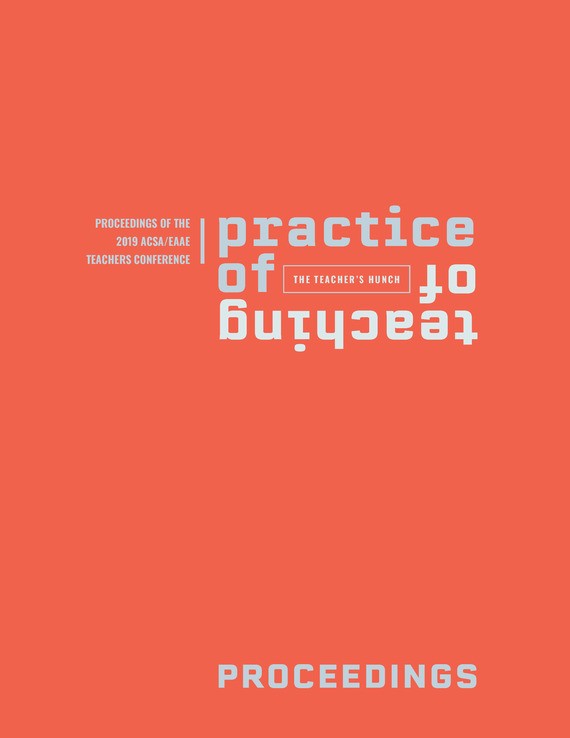Author(s): Giovanni Santamaria
It has become extremely important to revisit our teaching methodology along with pedagogical contents and objectives, in consideration of the impressive and sometimes overwhelming progress that the technology available to document, analyze and represent the complexity of our built and natural environments has reached, and also the role that it has been proactively playing in affecting our way of thinking, designing and building. A renewed “theory of formativity” (Pareyson)1 styles a knowledge that is generated by a constantly transforming process of “making,” in which methodologies, theoriesand learnings arise within the actions of designing and building, and mostly because of the making. Following the etymology of the Greek world2, this making could be understood as poetic way of actively participating to the changes of our environment. If we look carefully, this approach to structure the knowledge has been deeply rooted in the history and legacy of the most relevant architects and designers, as ontological condition imbedded also into the idea of progress. We have been witnessing several experimentations that have been capable of bringing theoretical explorations, such as the ones from the fields of philosophy and literature, into the realm of design and space making. These explorations reach various degrees of quality, but nevertheless they provide openings to further interesting discussions. An example of this sort could be among others, the collaboration between Eisenman and Derrida for the design proposal for Parc de la Villette in Paris of 19873, where the memory of the proposals for Cannaregio in Venice or the project “Romeo and Juliet” in Verona, are considered within the philosophical background of the criticism to the structuralism, and the projection towards a horizon of deconstruction. This concept migrated from the realm of thinking, to the one of designing and form making, in its highest sense, giving strength to role and identity within the field of architecture, of the idea of “fragment” and “text” often interrupted, following Lyotard’s suggestion4, as expression of the post-modern dimension.
https://doi.org/10.35483/ACSA.Teach.2019.11
Volume Editors
Richard Blythe & Johan De Walsche
ISBN
978-1-944214-23-4

 Study Architecture
Study Architecture  ProPEL
ProPEL 
